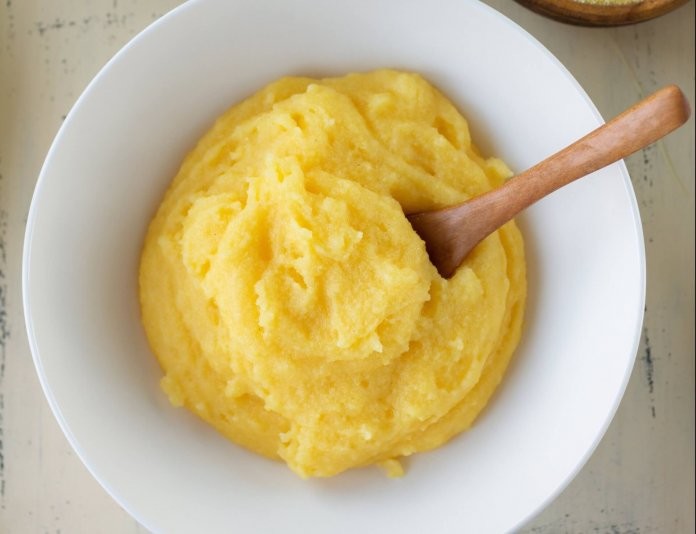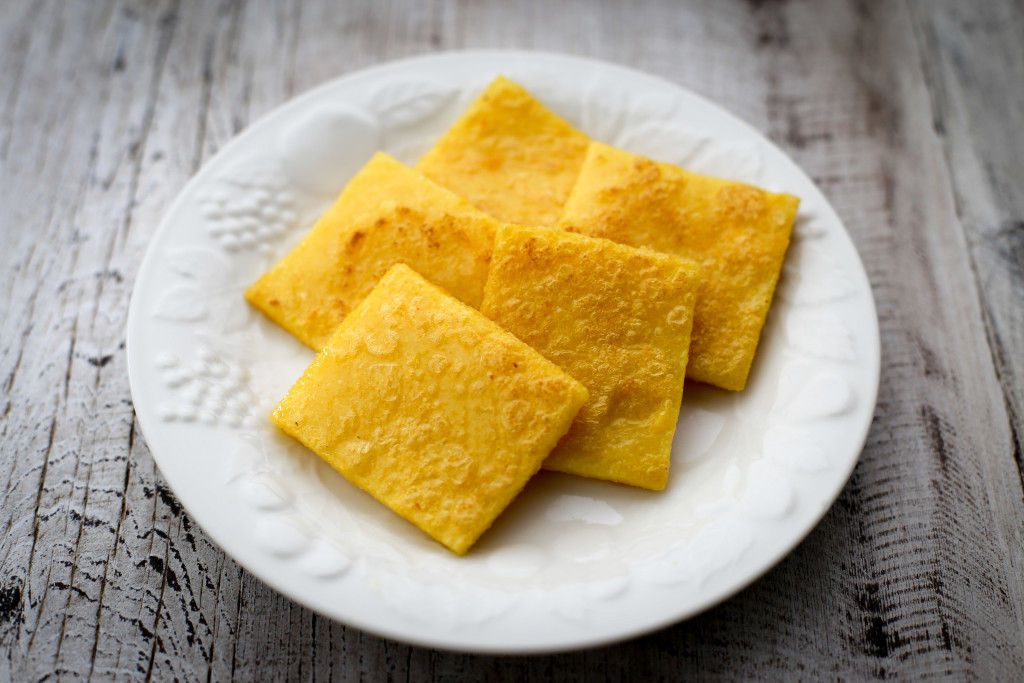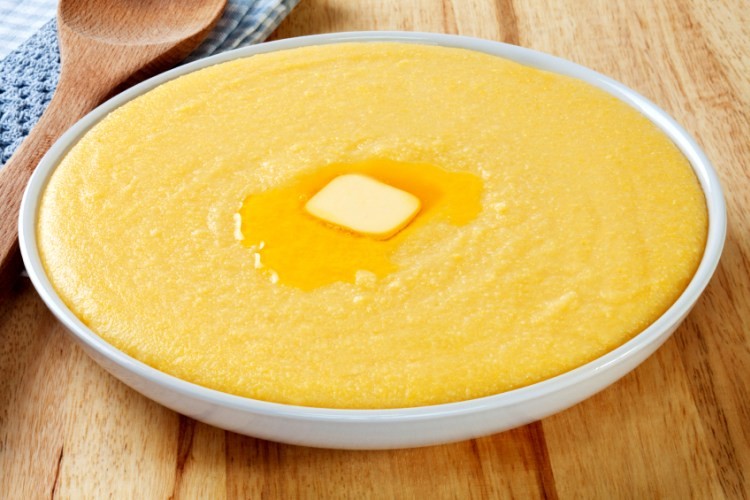Polenta
Polenta is another one of my country’s famous dishes, also popular in several other European countries. Polenta is made with yellow corn meal, and there are two different versions of it. One of them is with meat (goulash), and one of them is with milk and sugar. Both of them taste equally delicious, so I will share both versions with you. Try making them both and let me know which one do you like better. For me, it depends on the time of the day - if I am having polenta for lunch, I usually prefer to eat it with goulash, and if I am having it for dinner, I like it better with milk and sugar.
Ingredients
For the polenta
- Two cups of yellow corn meal
- Three cups of water
- One tablespoon of canola oil
- One teaspoon of salt
- Two tablespoons of curd or cottage cheese
For the beef goulash
- One kilogram of beef
- 250 grams of onions
- 100 milliliters of canola or sunflower oil
- 150 milliliters of beef stock
- 100 grams of tomato sauce
- 50 milliliters of white wine (this is optional, and the taste is much better if you use it)
- Two cloves of garlic
- Salt and pepper
- Laurel and thyme
If you decide to make polenta with milk, you can skip this part. All you need is milk and sugar, and the amount you use is entirely up to you.
Preparation
Since the beef goulash takes longer to prepare (rough preparation time is about two hours), it makes sense to make that part first. Again, if you are making polenta with milk and sugar, simply skip that part.
Slice the beef into smaller parts. It is entirely up to you how big they are, just do not make them too big because they will not cook well in that case. Peel the onions (to avoid tears, chew a bubble gum - it helps! ) and dice them in as small parts as possible.
Take a frying pan, put oil and chopped onion in it and fry until golden brown. I love that smell! Then, add the meat and fry until the meat releases the meat juice. Then, add the beef stock and stir well. Add laurel and thyme, stir well again and let it simmer over medium heat for a few minutes. During that time, chop up the garlic and add it to the mixture. Stir well, cover and cook over low heat. Stir occasionally.
In the meantime, take another pan, add the tomato sauce and fry until it darkens. Add the white wine and pour everything into the goulash mixture. Add salt and pepper - the amount depends on your taste entirely. Cook over low heat for an hour and a half. During that time, stir occasionally, and you will most likely also need to add some water during the cooking process. While waiting for the goulash to cook, you can start preparing the polenta.
When the goulash is ready, take it off the fire - by the time the polenta is ready, it will cool down just enough that you will be able to eat it straight away.
To make polenta, you have to do the following. Take a medium sized bowl and add three cups of water, salt and bring it to a boiling. Add canola oil, and pour the yellow corn meal in. This is more difficult than it might sound - you have to pour the yellow corn meal in slowly, and stir the mixture all the time to avoid lumps.
Add curd or cottage cheese, whichever you decide to use, and cook over medium heat for additional ten minutes. Again, you have to stir it all the time, otherwise it will stick to the bowl.
Once the polenta is cooked, pour it on a large plate and let it cool down. It will harden in the process, but that is completely normal. Once it is cooled down, you can cut it up and serve it, either with milk and sugar or goulash.

This is how cooked polenta should look like.
Serving and storage suggestions
Some people bake polenta in the oven for fifteen minutes after cooling down. Personally, I do not like this version, but you can try it.

Baked polenta is much crunchier and you can also eat it by itself.
To serve polenta with goulash, put a slice of it on a plate and pour goulash over it - it is as simple as that. If you would like to eat it with milk and sugar, also put a slice of polenta on a plate, pour milk over it and add a teaspoon or two of sugar, then use a fork to soften the polenta and make a smooth mixture. The warmer the milk is, the easier this process will be.

Polenta and goulash.

Polenta with sugar and milk.
You can freeze both goulash and polenta for longer periods of time, and they will be just as good after a few months as they are on the first day.
Photo gallery
Content available in other languages
- Español: Polenta
Want to have your own Erasmus blog?
If you are experiencing living abroad, you're an avid traveller or want to promote the city where you live... create your own blog and share your adventures!
I want to create my Erasmus blog! →







Comments (0 comments)